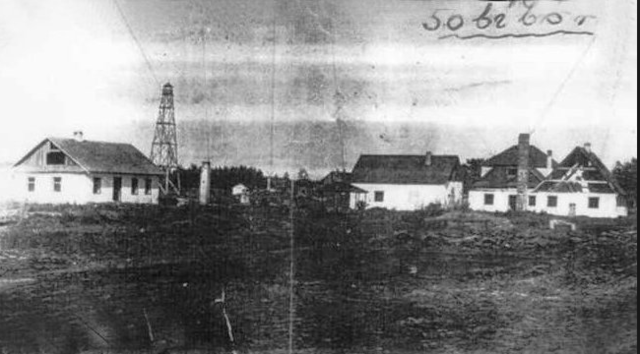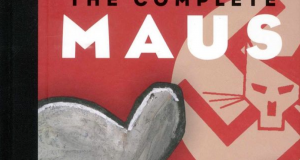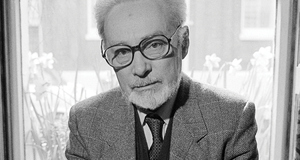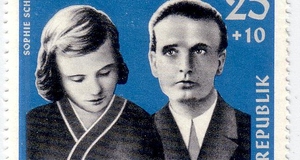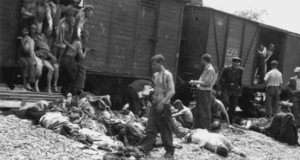The Sobibor Revolt: "Death to the Fascists"
By
2010, Vol. 2 No. 09 | pg. 1/1
IN THIS ARTICLE
KEYWORDS
Between 1942 and 1943, 250,000 innocent Jews were systematically murdered at the Nazi death camp Sobibor (Blatt). An underground movement, composed of a select few courageous individuals, plotted and executed a plan of escape to avoid the otherwise inevitable fate of their slain brothers and sisters. Though many prisoners died during the plan’s execution on October 14, 1943, hundreds more fled to freedom. For many, that freedom was short lived; it is estimated that of the nearly three hundred prisoners who survived the liberation, only about fifty survived the war (Caplan). The significance and effectiveness of a revolt which saved a mere fifty Jews is easily overshadowed by the slaughter of some six million throughout the Holocaust. However, the revolt was effective; it proved that the Nazi death machine was an imperfect and beatable force and led to the survival of fifty individuals who would leave a legacy, not only in genealogical terms, but in the truth about what happened at Sobibor. The PlanSobibor was a death factory; its purpose was singular: to assist in the annihilation of the world’s Jewish population. This was no mystery to the prisoners. In his account, From the Ashes of Sobibor, survivor Thomas Toivi Blatt reflects on the grim reality the prisoners were forced to confront:
The Nazis made a fatal mistake when they allowed captured Russian soldiers to mingle with the Jewish prisoners. The underground movement swiftly enlisted the help of Alexander “Sasha” Aronowich Pechersky, a trained military officer from the Red Army. With Feldhendler’s knowledge of the camp and Pechersky’s military tact, a feasible escape plan took form. Early plans, such as tunneling out of the camp, were deemed impractical and abandoned. The plan that emerged is described by Blatt as “the secret killing of as many Nazis and Ukrainians as possible within a period of one hour maximum” (Blatt 141). It would be carried out in three phases: preparation, the secret execution of SS officers, and “open revolt” (Blatt 142). The conspirators would capitalize on the notorious greed and punctuality of the SS officers. Promises of quality goods such as boots, jackets, and jewelry, would lure them to the various workshops around the camp where they would be murdered with make-shift axes and knives crafted by workers in the carpentry and blacksmith shops. It was decided early on that to successfully execute any escape plan would require the assistance of at least two of the Kapos, prisoners who worked for the Nazis. This would allow for easier movement throughout the camp on the day of the escape. The hope was to keep the execution of the SS officers secret until roll call, when a Jewish electrician would cut the camp’s power, preventing the guards from radioing for help. Prior to this, weapons would be dispensed to the prisoners who would be informed of the day’s developments. When a conspiring Kapo blew the whistle for roll call, which was planned to occur earlier than normal, the prisoners would fall in as usual, and be led by their Kapos to the front gates. It was believed that without the objection of the SS officers the group would be able to get close to the front gate without being suspected of escape by the Ukrainian guards. At this point some would break off and assault the armory while the others stormed the front gate, breaking through to freedom. Success hinged on “the number of Nazis killed, weapons at the prisoners’ disposal, and the effect of surprise on the guards in the camp and in the towers” (Blatt 142). If the plan succeeded as expected, all of the prisoners would safely escape through the front gate of Sobibor, avoiding the mine fields which surrounded the camp. However, it was decided that if the plan was foiled, the open revolt would begin and prisoners would try to escape to the forest despite the chaos. Despite the potential for failure, Feldhendler and Pechersky knew that if they didn’t lead the prisoners to freedom, the Germans would lead them to the gas chambers. As Blatt testifies in his account, they would rather “die from bullets […] than from gas” (Blatt 139). The plan would be carried out on October 13, 1943. “Open Revolt”The conspirators woke on October 13th ready to mercilessly exact their revenge on the Nazis who showed so little mercy to their family and friends. The absence of SS Wagner, one of the more intelligent SS officers, who was on vacation, lifted their spirits. However, panic struck the group when SS soldiers from the nearby labor camp Ossowa arrived at Sobibor. Blatt recalls his panic: “I was terrified. We are betrayed, everything is lost” (Blatt 144). Drunken revelry among the SS relieved the conspirators’ tensions; the guests were at Sobibor on a casual visit. The conspiracy hadn’t been betrayed. However, the additional troops could prove problematic in the revolt and could jeopardize the German punctuality the plan depended on. The underground decided to delay the revolt by one day. On October 14, 1943, the Jews at Sobibor would finally get their revenge and reclaim their freedom.Though there is no doubt that the hours between October 13 and October 14 slowed for the conspirators, when they awoke on the sunny October morning, their zeal was as fervent as ever. Between midday and 4:00 pm, phase one was carried out. Weapons in tow, the killers took their positions in the shops around the camp. Nerves frayed when a machinegun-wielding Nazi escorted one of the conspiring Kapos and three other Jews from the Lager. The on-looking conspirators later found out that the four had just been brought to a different part of the camp to stack wood. The conspiracy was secure. The blow of a Jewish axe split the first Nazi skull just after 4:00 pm; acting Commandant Untersturmfuhrer Niemann entered the tailor shop expecting a new uniform, but instead met with death. In similar fashions the SS officers were killed one by one, each expecting to leave with his life and new adornments, each murdered before he could leave with either. The plan proceeded as expected until, for an unknown reason, one SS Beckmann turned away from the warehouse where he was summoned, disappearing into the administrative building. An emergency group of three men was assembled and sent to Beckmann’s office where they repeatedly stabbed the startled SS officer in the chest until he died. The group then killed an officer in the adjacent office. According to Blatt, “on average, from 4:00 pm on, one German was killed every six minutes” (Blatt 150). The majority of the Germans were thus dead by 5:00 pm. Prisoners began assembling in the roll-call area just after 5:00 pm. As news of the plan spread and tensions rose, Pechersky knew they couldn’t wait any longer. At 5:30 pm, 15 minutes early, he ordered Kapo Pozycki to blow his whistle for evening roll call preparation. When everyone was assembled, weapons were distributed among the prisoners and soon everyone knew of the plan. Adrenaline pumped through the veins of some prisoners, while fear crippled others who refused to participate. As prisoners scrambled for weapons, the gaze of a Ukrainian guard perched in a guard tower drifted into the administrative building where he spotted the slain body of SS Beckmann. “A German is dead!” he shouted to SS Bauer who was unloading a truck with two prisoners (Blatt). Bauer promptly withdrew his pistol and opened fire on the prisoners. The shots informed Pechersky that their plot had been discovered. He leapt up on a table and addressed the panicked crowd: "Our day has come. Most of the Germans are dead. Let's die with honor. Remember, if anyone survives, he must tell the world what has happened here” (Rashke). He concluded his speech by roaring, “Comrades forward! Death to the Fascists!!!” (Blatt 151). Now it was every man for himself. The crowd rang out with calls of “hurrah” (Blatt 151), and before the Ukrainian guards could tell there was an uprising, they dispersed in large groups, running defiantly towards the barbed wire. Axes and shovels tore away at the fences as objects flew over to detonate mines. One group rushed the main gate with weapons in tow. The Jews attacked any guard in sight while showers of bullets rained down from the machineguns mounted in the watch towers, decimating the attackers. The Jews in the armory collected whatever weapons were available and rushed to the battle, firing on guards in the watchtowers. Corpses piled up as the relentless machine gun fire carried on. After tearing through the barbed wire, many Jews rushed into the mine field. Blatt recalls, “We preferred sudden death to a moment more in that hell” (Blatt 153). The sounds of gunfire and explosions echoed through the air as prisoners rushed to the forest, many falling dead before reaching the trees. Despite the carnage, many did escape to the safety of the forest. Just before nightfall, the guards knew better than to follow them. For now, the prisoners were free. Aftermath and EffectivenessOf the 550 prisoners at Sobibor at the time of the revolt, 150 were left behind at the camp (either because of inability or refusal to escape), eighty were killed during the process by mines or gunfire, and 320 escaped to the forest. Of those 320, 170 were recaptured and executed in the search conducted by the Germans over the following weeks. Of the 150 who remained ninety-two were killed while in hiding. Another five survivors lost their lives fighting against the Germans in the war. In all, only fifty-three revolt survivors would go on to survive the war, as well as nine others who had escaped from Sobibor prior to the revolt. The ashes of 250,000 Jews and other prisoners murdered by the Nazis were left behind (Blatt). The revolt also claimed the lives of twelve Nazi soldiers and eight Ukrainian guards (Blatt). As a form of retaliation and as a preventative measure against similar revolts in the future, the Nazi high command liquidated the remaining Jews in the area. Over the course of six days in November of 1943, they slaughtered 43,000 Jews (Blatt). Throughout World War II, the Nazi regime murdered an estimated six million Jews. In light of the staggering loss of life before, during, and after the Sobibor revolt, it is easy to claim the survival of fifty-three individuals insignificant and the revolt ineffective. However, because the murder of six million people is so unfathomable, the world’s ability to recognize and understand the atrocity is derived from individual accounts of suffering and survival. These fifty-three individuals were able to heed the call of Sasha Pechersky to spread the truth of what happened at Sobibor; many would go on to testify against those who committed the unthinkable crimes. In each survivor the world can find an individual account of the horror of the Holocaust. These stories are important because it is in these tales of suffering, needless bloodshed, brutal dehumanization, and resistance that the world can fully understand how vital it is to humanity that such an atrocity is never again allowed to take place. Had only one prisoner survived the war and spread the truth about Sobibor, the revolt would necessarily be considered effective. The Sobibor revolt also proved to the world that the Germans could be defeated. The Nazi regime was not the unbeatable force it seemed to be. If an uprising of weak, malnourished prisoners could topple Sobibor, surely the Allied powers could defeat the Nazis. Additionally, the Jews at Sobibor proved that they were not the “inferior” race the Nazis believed them to be. The fact that a group of “racially inferior” Jews, as the Nazis claimed, was able to murder SS soldiers and escape the clutches of the “racially superior” cannot be reconciled by Nazi dogma. The heroism displayed by the Jews of Sobibor on October 14, 1943 far out-matched the cowardice of their Nazi captors. ________________________ The revolt at Sobibor is a profound example of human resistance during the most trying time in human history. The Jews at Sobibor were unwilling to submit themselves to death at the hands of the Nazis. The effectiveness of the revolt cannot be examined quantitatively; its importance lies in the stories which emerged from behind the barbed wire, in the fact that the survivors had a significant impact on human history. ReferencesBlatt, Thomas Toivi. From the Ashes of Sobibor: A Story of Survival. Evanston: Northwestern University Press, 1997. Blatt, Thomas Toivi. Sobibor, The Forgotten Revolt. 2002 - 2009. 22 September 2009 . Caplan, Richelle Budd. "Escape under Fire: The Sobibor Uprising." 2004. Yad Vashem On-line Magazine. Yad Vashem The Holocaust Martyrs' and Heroes' Remembrance Authority. 22 September 2009 . Rashke, Richard. Escape From Sobibor. Chicago: University of Illinois Press, 1995. Suggested Reading from Inquiries Journal
Inquiries Journal provides undergraduate and graduate students around the world a platform for the wide dissemination of academic work over a range of core disciplines. Representing the work of students from hundreds of institutions around the globe, Inquiries Journal's large database of academic articles is completely free. Learn more | Blog | Submit Latest in History |

